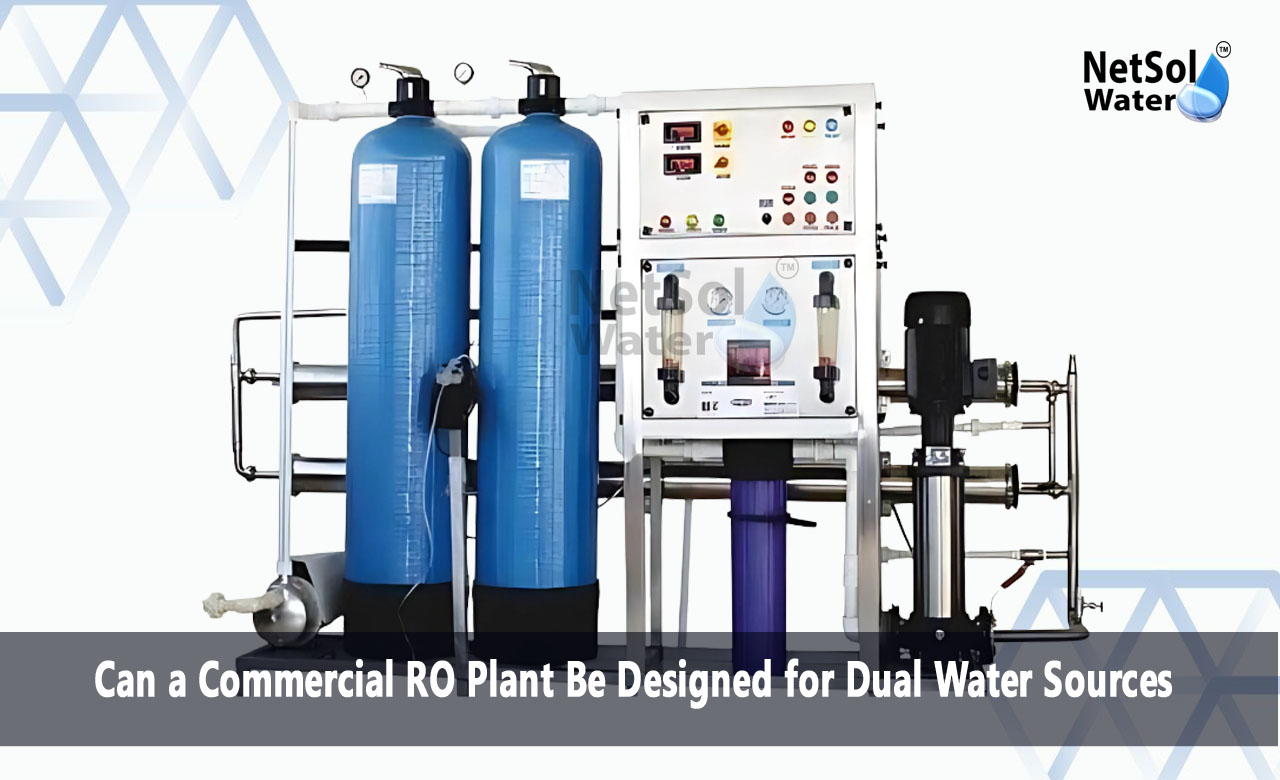Can a Commercial RO Plant Be Designed for Dual Water Sources?
RO plants are common in commercial applications to give clean, safe, and pure water by purifying different sources of water by removing impurities. Most industries, companies, and institutions depend on commercial RO plants for their water requirements on a day-to-day basis. But what if the water source is from two diverse sources — say, a municipal supply and a groundwater well? Is it possible for a single system to manage both?
This brings up an important question: Can a commercial RO plant be designed for dual water sources? The answer is yes. We’ll explore how a commercial RO plant can be designed to treat two different water sources effectively, the challenges involved, and the benefits of such designs.
Understanding Dual Water Sources
Water supply in most locations may change -- on occasion supplied from the city (municipal) water lines, and on other occasions from onsite groundwater boreholes or wells. The two sources tend to be different in terms of water quality.
Municipal water tends to be treated but can, nonetheless, contain remaining chlorine, chloramines, and some minerals.
Groundwater may have excess hardness, iron, manganese, or total dissolved solids (TDS).
A commercial RO plant treating both sources needs to be able to adapt to these differences in order to deliver consistent, high-quality output water.
How Can a Commercial RO Plant Be Designed for Dual Water Sources?
Designing a commercial RO plant for dual water sources entails a number of crucial considerations:
Source Water Analysis
Prior to design, the water from both sources needs to be tested extensively in order to learn of any variations in parameters like TDS, pH, hardness, iron levels, presence of microorganisms, and potential contaminants. Analyzing this will assist in determining the pretreatment and treatment processes needed.
Pretreatment Systems
Various water sources may have varying pretreatment steps. For instance:
· Municipal water can require dechlorination to safeguard RO membranes.
· Groundwater might be subjected to iron removal, hardness reduction (softening), or filtering to eliminate sediments.
· A dual-source RO plant can be equipped with parallel pretreatment units or combined pretreatment that is equally effective for both sources.
Source Selection and Switching System
A dual-source commercial RO plant typically has a system (such as valves and sensors) to choose which source of water supplies the system. The operator has the ability to change sources according to availability or quality. Automated controls may also change sources by criterion-based quality levels.
RO Membrane Selection
Membranes need to be selected that can withstand the different qualities of water from both sources. Some membranes have greater resistance to fouling or chemical damage, which is particularly necessary when changing sources.
System Monitoring and Control
There has to be continuous monitoring of a dual-source system. Feed water quality, pressure, flow rate, and permeate quality must be monitored closely to catch any problems early and make changes to operations accordingly.
Advantages of a Dual Water Source RO Plant
· Reliability: Should one water source be inoperable or quality reduce, the plant can fall back on the other and maintain a continuous water supply.
· Flexibility: Commercial buildings or industries can respond to seasonal fluctuations or shortages by toggling sources.
· Cost Efficiency: Draw from groundwater where municipal water is costly or in short supply to curb operating expenses.
· Enhanced Water Management: Enables optimization of water supplies by mixing or selecting the optimal source for particular applications.
Designing Dual Sources Is Challenging
· Complication: With source switching and multiple pretreatment, system design becomes more complicated.
· Increased Initial Cost: Additional equipment and controls raise initial expense.
· Maintenance: Variable water qualities may lead to variable membrane fouling and system wear, necessitating skilled maintenance.
· Space Needs: More pretreatment units and piping can expand the plant footprint.
Real-World Applications
A number of commercial and industrial establishments employ dual-source RO plants. Some examples are:
· Hotels which receive municipal water but also have onsite borewells.
· Manufacturing facilities with irregular water supply patterns.
· Commercial complexes in locations where city water is not reliable.
In such situations, a dual-source RO plant ensures uniform operation and water quality without being disrupted.
Conclusion
The answer to the question "Can a commercial RO plant be designed for dual water sources?" is a resounding yes. With proper planning, source water analysis, and suitable technology, commercial RO plants can effectively treat double water sources, making them reliable, flexible, and of excellent quality.
They offer a shrewd answer in variable water supply or water quality difficult areas and are increasingly crucial as water management becomes more complex.
If you are considering an RO plant that handles dual sources or want a tailored design for your commercial needs, consulting experienced manufacturers and engineers is crucial to achieve the best performance.
Do you need an advice or assistance on selecting the best water and waste water treatment unit? We have solutions for all your problems!
Let us know your problem, our experts will make sure that it goes away.
For an assistance or related query,
Call on +91-9650608473 Or write us at enquiry@netsolwater.com



